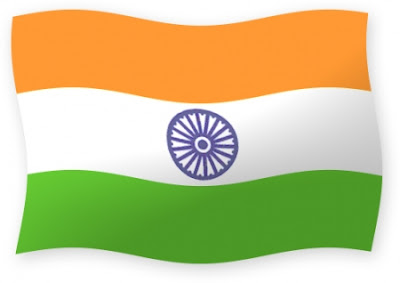
Sunday, August 15, 2010
India to celebrate 64th Independence Day

Sunday, August 1, 2010
Happy Friendship Day
Saturday, May 1, 2010
Saturday, March 20, 2010
Acne drug may help prevent HIV breakout
Good morning friends. A cheap acne drug that's been used for decades effectively targets infected immune cells in which HIV, the virus that causes AIDS, lies dormant and prevents them from reactivating and replicating, claim Johns Hopkins researchers.
The drug, minocycline, likely will improve on the current treatment regimens of HIV-infected patients if used in combination with a standard drug cocktail known as HAART (Highly Active Antiretroviral Therapy), according to research published now online and appearing in print April 15 in The Journal of Infectious Diseas es.
“The powerful advantage to using minocycline is that the virus appears less able to develop drug resistance because minocycline targets cellular pathways not viral proteins,” says Janice Clements, Ph.D., Mary Wallace Stanton Professor of Faculty Affairs, vice dean for faculty, and professor of molecular and comparative pathobiology at the Johns Hopkins University School of Medicine.
“The big challenge clinicians deal with now in this country when treating HIV patients is keeping the virus locked in a dormant state,” Clements adds. “While HAART is really effective in keeping down active replication, minocycline is another arm of defense against the virus.”
Unlike the drugs used in HAART which target the virus, minocycline homes in on, and adjusts T cells, major immune system agents and targets of HIV infection. According to Clements, minocycline reduces the ability of T cells to activate and proliferate, both steps crucial to HIV production and progression toward full blown AIDS.
If taken daily for life, HAART usually can protect people from becoming ill, but it’s not a cure. The HIV virus is kept at a low level but isn’t ever entirely purged; it stays quietly hidden in some immune cells. If a person stops HAART or misses a dose, the virus can reactivate out of those immune cells and begin to spread.
The idea for using minocycline as an adjunct to HAART resulted when the Hopkins team learned of research by others on rheumatoid arthritis patients showing the anti-inflammatory effects of minocycline on T cells. The Hopkins group connected the dots between that study with previous research of their own showing that minocycline treatment had multiple beneficial effects in monkeys infected with SIV, the primate version of HIV. In monkeys treated with minocycline, the virus load in the cerebrospinal fluid, the viral RNA in the brain and the severity of central nervous system disease were significantly decreased. The drug was also shown to affect T cell activation and proliferation.
“Since minocycline reduced T cell activation, you might think it would have impaired the immune systems in the macaques, which are very similar to humans, but we didn’t see any deleterious effect,” says Gregory Szeto, a graduate student in the Department of Cellular and Molecular Medicine working in the Retrovirus Laboratory at Hopkins. “This drug strikes a good balance and is ideal for HIV because it targets very specific aspects of immune activation.” The Times of India
Thursday, March 11, 2010
Scabies pill also works against resistant lice
Sunday, February 28, 2010
High-fat diets raise stroke risk in women, study
Thursday, February 25, 2010
Strokes can happen to children too
Children can have strokes too that can be recurrent, according to pediatric researchers.
Sunday, February 21, 2010
Early eczema can affect mental health later
Wednesday, February 17, 2010
Childhood stress may lead to brain damage
Saturday, February 13, 2010
New breast cancer screening technology
With the number of breast cancer cases on the increase, a new screening technology has been introduced by Siemens Healthcare .
Tuesday, February 9, 2010
New way to treat prostate cancer
Monash University researchers have discovered a new way to treat castrate resistant cells in prostate cancer patients.
Friday, February 5, 2010
How does the body heal itself?
Sunday, January 31, 2010
Vitamin E supplements do more harm
"There were so many conflicting reports about Vitamin E and its effect on various diseases, particularly heart disease, that we wanted to set the record straight, says Prof. Dov Lichtenberg of Tel Aviv University’s Sackler School of Medicine.
Tuesday, January 26, 2010
Thursday, January 14, 2010
Happy Uttarayan from Gujarat
Happy Uttarayan to All
from Dhirendra from Gujarat.
May this 2010 1st feastival
bring Happiness to your life.
I wish you and your family a very
Happy Makar Sankranthi.
Sunday, January 10, 2010
Calcium vital to tickle our taste buds
Good morning friends. A new study has shown that calcium plays a vital role in tickling our taste buds.
The team of Japanese researchers have shown that calcium channels on the tongue are the targets of compounds that can enhance taste. Kokumi taste foods contain various compounds that have no taste themselves, but can enhance the basic sweet, salty and umami taste sensation they co-exist with. Lead researcher Yuzuru Eto examined whether calcium channels- which sense and regulate the levels of calcium in the body- might be the mechanism involved.
They found that calcium channels are closely related to the receptors that sense sweet and umami (savory) tastes and that glutathione (a common kokumi taste element) is known to interact with calcium channels. During the study, researchers created several small molecules that resembled glutathione and analyzed how well these compounds activated calcium channels in cell samples.
They diluted the same test substances in flavored water (salt water, sugar water, etc.) and asked volunteers (all trained in discriminating tastes) to rate how strong the flavors were. The findings revealed that the molecules induced the largest activity in calcium receptors and also elicited the strongest flavor enhancement in the taste tests. The research tested several other known calcium channel activators, including calcium, and found all exhibited some degree of flavor enhancement, while a synthetic calcium channel blocker could suppress flavors. The Times of India

